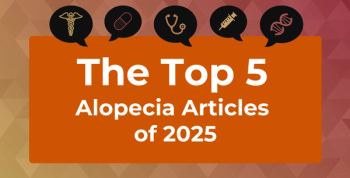
Optimizing GDMT Could Prevent Over 1 Million HFrEF Deaths Annually
Despite being eligible for guideline-directed medical therapy (GDMT), tens of millions of patients across the globe are not receiving the heart failure care they need.
By optimizing the utilization of guideline-directed medical therapy (GDMT), doctors could prevent the deaths of more than a million patients with
New research published in
“Although prior studies have estimated mortality benefits for individual components of GDMT, nearly all studies have focused on the US,” the study researchers said. “The projected benefits of global optimization of GDMT remain unknown, despite lower– and middle-income countries experiencing increasing rates of heart failure, contributing to significant morbidity and mortality as well as increasing health care costs.”
The study used data from nearly 30 million people with HFrEF from the Eastern Mediterranean and African, Southeast Asian, and Western Pacific regions of the world. Based on the REPORT-HF registry data, researchers estimated that:
- 8.2 million patients were potentially eligible for but not receiving β-blockers
- 20.4 million patients were eligible for but not receiving angiotensin receptor neprilysin inhibitors (ARNIs)
- 2.2 million patients were eligible for but not receiving mineralocorticoid receptor antagonists (MRAs)
- 21.2 million patients were eligible for but not receiving sodium glucose cotransporter-2 (SGLT2) inhibitors
Interestingly, North America had high rates of β-blocker use but comparatively low rates for angiotensin-converting enzyme (ACE) inhibitors, angiotensin receptor blockers (ARBs), and MRAs. Additionally, Western Europe had high rates of β-blocker use, while Eastern Europe had high ACEI/ARB and MRA use. Southeast Asia and the Western Pacific had the lowest rates of β-blocker utilization.
According to the researchers, optimal implementation of quadruple GDMT has the potential to prevent 1,188,277 (95% CI, 767,933-1,914,561) global deaths over 12 months, largely due to cardiovascular death prevention. With optimal GDMT, Southeast Asia and the Western Pacific would see an estimated 720,054 prevented HFrEF deaths combined, and an estimated 293,491 deaths would be prevented in the Eastern Mediterranean and African regions.
“These differences are mostly driven by the fact that a large proportion of the global HFrEF population resides in these regions coupled with relatively low current treatment rates,” the researchers explained. “These findings highlight the heterogeneity of GDMT treatment worldwide as well as the magnitude of potential deaths averted with improvements in GDMT utilization.”
Importantly, ARNIs and SGLT2 inhibitors contributed the most to reducing deaths, accounting for 29.5% and 28.4% of lives saved, respectively. Optimal utilization of β-blockers led to 24.8% of total global lives saved, while MRAs were responsible for 17.4% of lives preserved worldwide.
This study has several limitations, primarily due to the limited global data on GDMT eligibility and treatment. Most of the treatment rate data were sourced from the REPORT-HF registry, which, while spanning 44 countries, included only 5 African nations. Additionally, estimates of GDMT contraindications were derived from US data and applied globally, and data on ARNI and SGLT2i usage were estimated from registries limited to the US, Sweden, and Japan, potentially skewing utilization levels. The study also does not fully reflect real-world tolerability and adherence to GDMT, as relative risk reductions were based on clinical trial data. A multilevel sensitivity analysis was conducted to address some of these uncertainties.
The issue of GDMT not being fully implemented has been a hot topic of conversation in the heart failure space recently. Another
Separately, a look at the European Society of Cardiology (ESC) heart failure guideline adherence
“Efforts toward reducing barriers to the administration of these beneficial drugs are needed,” the researchers of the current study said.1 “This includes addressing the social determinants of health that create disparities in quality health care, more universal coverage for life-enhancing therapies, development of polypills, and earlier implementation of treatments.”
References
- Tang AB, Ziaeian B, Butler J, Yancy CW, Fonarow GC. Global impact of optimal implementation of guideline-directed medical therapy in heart failure. JAMA Cardiol. Published online October 2, 2024. doi:10.1001/jamacardio.2024.3023
- Klein HE. Study reveals high variability in hospital GDMT scores, outcomes, costs. AJMC®. September 25, 2024. Accessed October 1, 2024. https://www.ajmc.com/view/study-reveals-high-variability-in-hospital-gdmt-scores-outcomes-costs
- Klein HE. Adherence to 2021 ESC heart failure guidelines differed across practices. AJMC. September 26, 2024. Accessed October 1, 2024. https://www.ajmc.com/view/adherence-to-2021-esc-heart-failure-guidelines-differed-across-practices
Newsletter
Stay ahead of policy, cost, and value—subscribe to AJMC for expert insights at the intersection of clinical care and health economics.








































